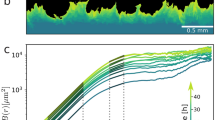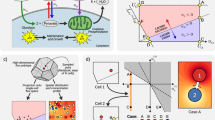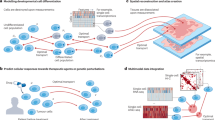Abstract
We investigate methods for modelling metabolism within populations of cells. Typically one represents the interaction of a cloned population of cells with their environment as though it were one large cell. The question is as to whether any dynamics are lost by this assumption, and as to whether it might be more appropriate to instead model each cell individually. We show that it is sufficient to model at an intermediate level of granularity, representing the population as two interacting lumps of tissue.
Similar content being viewed by others
Article PDF
Author information
Authors and Affiliations
Rights and permissions
About this article
Cite this article
Smallbone, K. One lump or two?. Nat Prec (2009). https://doi.org/10.1038/npre.2009.4033.1
Received:
Accepted:
Published:
DOI: https://doi.org/10.1038/npre.2009.4033.1



